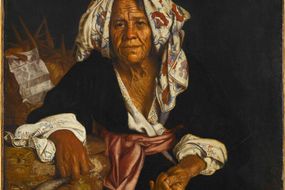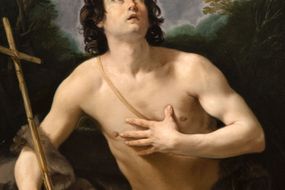From 9 April to 21 August 2022
On May 26, 1573 Sofonisba Anguissola, one of the most intriguing painters of the Italian Renaissance, married the Sicilian nobleman Fabrizio Moncada. After years spent at court in Madrid as a lady-in-waiting to Queen Isabella and guardian of the infants, the painter from Cremona was welcomed in the small court of Paternò, on the slopes of Mount Etna, where she began a new life. her husband, during a pirate attack in the sea of Capri, decided to return to Cremona. In reality she never returned there, overwhelmed by a fulminating love for the captain of the ship that took her to Genoa, she stopped for a long time in the Ligurian city before returning once again to Sicily, but this time to Palermo, where she will die almost 100 years old. Her activity as "Ruler" of the Moncada fiefdom is well documented. Equally, however, is not that of a painter in those same years.
The exhibition "Sofonisba Anguissola and the Madonna dell'Itria" is expected at the Ala Ponzone Museum in Cremona from 9 April to 10 July, from where it will then move to the Diocesan Museum of Catania. The aim of the original exhibition is to highlight the years passed from Sofonisba to Paternò, starting from a certain work of that time, the altarpiece of the Madonna dell'Itria today heritage of the church of the Annunciata di Paternò. In the painting, of considerable size, the Cremonese artist summarizes and updates the iconographic transformations of the Madonna Ogiditria, a model transmitted by the Byzantine world and soon implemented in the islands and in the southern Italian regions following the Greek and Albanian communities coming from the Balkans. The popular iconography that initially proposes the half-length Madonna holding the Child Jesus seated in blessing and that the Virgin indicates with her right hand (hence the origin of the epithet) is transformed from the sixteenth century into the complex figuration in which the Virgin dominates a wooden chest carried on the shoulders by two Basilian monks (the "calogeri").
They refer to the legends relating to the stealing and securing, inside a chest, of the miraculous icon that was wanted to be painted by St. Luke himself and which for a long time had been considered a protector by the inhabitants of Constantinople, before the definitive catastrophe of 1453. To save it from the destructive fury of the Ottomans, the monks who had it in custody would have entrusted it to the waves and thus it would have reached the western shores. The cult reserved for the Madonna d'Itria therefore reached great popularity, and during the sixteenth century churches dedicated to her arose everywhere in Sicily and the Madonna of Itria was proclaimed Patroness of the island.

Via Ugolani Dati, 4, Cremona, Italy
Opening hours
| opens - closes | last entry | |
| monday | Closed now | |
| tuesday | 09:00 - 14:00 | 13:00 |
| wednesday | 09:00 - 14:00 | 13:00 |
| thursday | 20:00 - 22:00 | 21:00 |
| friday | 20:00 - 22:00 | 21:00 |
| saturday | 09:00 - 14:00 | 16:00 |
| sunday | 09:00 - 14:00 | 16:00 |

From 19 September to 18 January 2026
Wonder, reality, enigma

Galleries of the Academy of Venice, Venice

From 11 October to 18 January 2026
The "divine" Guido Reni in the Savoy collections and on the altars of Piedmont

Royal Museums of Turin, Turin